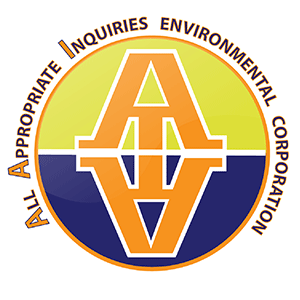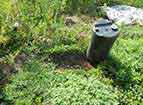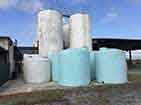Phase 2 Environmental - assessment details and discussion
Last updated: February 19, 2023Phase 2 Environmental Site Assessment reports are sometimes required when a Recognized Environmental Condition (REC) is found during the Phase 1 Environmental Assessment process. These investigations consist of collecting soil samples, and sometimes groundwater, surface water and soil vapor samples, to screen for chemical or metal contamination. This sampling is conducted by drill rig, hydraulic push, hand auger or backhoe, depending on site specific conditions.
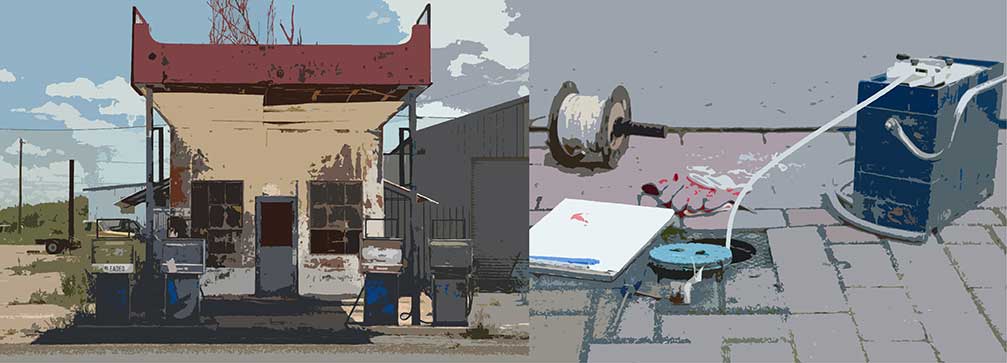
What methods are utilized in Phase 2 Environmental reports?
AAI conducts Phase 2 ESAs at sites where there is known or significantly-potential soil and/or groundwater contamination. These reports are typically limited in nature and are usually the result of a Recognized Environmental Condition being found in a Phase I report during a real estate transaction, or prior to an owner listing a property for sale. The soil and/or groundwater testing is only an initial screen of soil and/or groundwater, in order to determine if there is contamination.
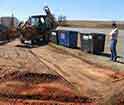
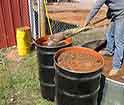
Once contamination is found to be significant and/or to exceed federal, state or local cleanup or human-health risk standards, a further site characterization is required, in order to help establish the vertical and lateral extent of a contamination plume. In these situations, agency consultation is required in order to pursue closure from an oversight agency. A "no further action" letter is pursued for a site, in order to make the property "sellable." In some cases, among sophisticated buyers, a liability transfer is negotiated and executed contractually. For regulatory-mandated cleanup and/or monitoring, the client can apply to available cleanup funds, when available, in order to recover moneys spent.



Phase II Environmental Site Assessment Technologies:
Hydrogeologic Studies
Hydrogeologic studies are conducted at a site to determine the properties, parameters and characteristics of a groundwater-containing aquifer. These investigations are typically conducted to determine if there is significant contamination or potential contamination in a water-bearing zone. These studies are also associated with determining if an aquifer has the characteristics and properties to be useful as a water supply. The most common reasons for conducting hydrogeologic investigations are:
1. As part of a Phase 2 ESA for a real estate transaction
2. To determine if an aquifer can be used as a supply and for optimal well design
3. Monitoring of groundwater at contaminated sites
4. Feasibility studies for remediation design
5. To determine if off-site sources are impacting groundwater in civil liability cases
6. Due to regulatory-mandated cleanup or monitoring

Typical methods for determining groundwater characteristics:
1. Drilling of pilot borings
2. Installation of monitoring wells
3. Installation of extraction and injection wells
4. Pump tests
5. Groundwater modeling
6. Geophysical surveys, logging, wireline tools and sieve-analysis for engineered sandpacks, perforated casing and screening

Water Well Design and Installation
AAI's hydrogeologists design and install groundwater supply, injection, extraction and monitoring wells.
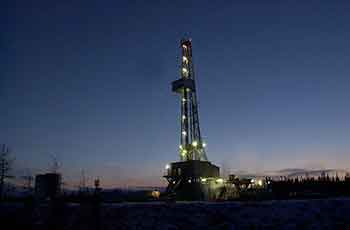
Here are a few of our notable groundwater projects.
1,100-foot deep groundwater supply well design and installation
An industrial client who needed water in their process engaged us to design a new groundwater supply well, after they started seeing unacceptable amounts of silts in their produced water from their existing water well. After reviewing the previous well log, we determined that the failing well had been screened through numerous silt layers, by installing the slotted casing and sand pack straight through all layers in one, long screened interval.In order to properly design the new groundwater supply well, we used mud-rotary drilling technology and a 17-inch diameter pilot boring was drilled around the clock for three months, with 3 hydrogeologists working 8-hour shifts to log the wells, collect soil samples for sieve analysis, and upon reaching total depth of 1,100 feet below ground surface, performed geophysical surveys utilizing a downhole wireline tool to help identify sand layers associated with 7 known aquifers in the area.
Upon completion of the pilot boring and after analyzing the boring logs, sieve analyses and downhole geophysical surveys, we designed specific sand packs and slotted casing for each aquifer, with blank casing at the silty and clayey layers that were causing the problem. Upon completion of the design, the 17-inch pilot boring was reamed out to 24 inches. The groundwater well was then installed and constructed with our designed sand packs and perforated casings, along with the entire well to a total depth of 1,100 feet.

Under a National Pollutant Discharge Elimination System (NPDES) permit obtained from the California Regional Water Quality Control Board, the groundwater supply well was then developed for several days, while discharging the development water into the storm drain. Upon well development completion, a pump test was conducted which produced clean, silt-less groundwater at 1,600 gallons per minute at maximum pump rate.
Site Characterization at inactive chemical refinery
As part of a business purchase and real estate transaction at a refinery in Louisiana, we conducted an extensive subsurface investigation to determine shallow aquifer characteristics, groundwater plume delineation, created iso-concentration maps, as well as, soil sampling for lab analysis. The site characterization included design and installation of several groundwater monitoring wells and numerous soil borings.
Groundwater measurements determined groundwater flow gradient and direction, which resulted in accurate groundwater contour maps. After subsequent monitoring, the contaminant plume was delineated and monitored. Based on the site characterization, our client was able to make a good business decision in regard to going forward with the transaction.
Subsurface investigation at proposed commercial cannabis facility at former industrial property
As part of a real estate transaction and planning department approval requirement for a proposed commercial cannabis facility in Los Angeles County, we conducted groundwater monitoring well installations and soil borings, in order to determine if a significant environmental liability existed in the subsurface or if a potential human health hazard existed. In addition to the soil matrix and groundwater sampling, soil vapor measurements were performed.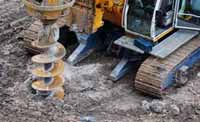
It was determined the adjacent long-term groundwater contamination at a neighboring chemical refinery that was hydraulically up-gradient to the subject property had not migrated to beneath the subject property and the ongoing regulatory agency oversight, along with over 30 years of monitoring, did not detect contaminants at or above regulatory limits at the subject property. The study satisfied the planning department for the proposed construction of the new cannabis growing facility.
Soils Studies
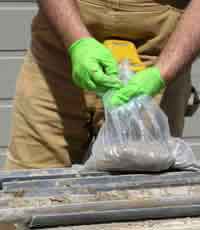
Soils investigations that are part of an environmental study, typically a Phase II Environmental Site Assessment, are conducted to establish the chemical makeup of the soil in order to determine if there are significant amounts of contaminants that will require remediation or monitoring, or create land use limitations. These contaminants are sometimes present due to current or previous storage and use of hazardous chemicals at a property.
These investigations are usually associated with real estate transactions, where a significant potential for contamination was determined in a Phase 1 report. Geotechnical soil studies are conducted to determine physical characteristics and properties of soil for construction projects. These soils studies are conducted by licensed professional geologists with extensive experience. Here are some of the typical methods that we utilize for collecting soil samples for environmental and geotechnical investigations:
1. Hand auger
2. Test pits by shovel for shallow sampling
3. Hydraulic push that minimizes waste-soil cuttings and is good for shallow sampling
4. Backhoe for trenching
5. Truck-mounted open-flight hollow-stem auger
6. Mud-rotary drilling
7. Air-rotary drilling
8. Directional and horizontal drilling
9. Geophysical surveys, such as: ground-penetrating radar (GPR) and magnetometer are utilized to locate underground storage tanks and utilities.
We design and install groundwater monitoring wells at locations where known or potential environmental impact occurs. These wells are provided for real estate transactions or agency-oversight projects and for legal cases.

When is a Phase II Environmental Site Assessment needed?
This is a common question and there is not a simple answer. The ASTM standard describes a recognized environmental condition as the presence or likely presence of any hazardous substances or petroleum products on a property under conditions that indicate an existing release, a past release, or a material threat of a release of any hazardous substances or petroleum products into structures on the property or into the ground, ground water, or surface water of the property. The term includes hazardous substances or petroleum products even under conditions in compliance with laws.
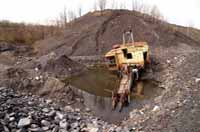
In general, previous uses that can typically create the need for a subsurface investigations include: gas stations, dry cleaners, industrial, oilfield, agricultural, refineries, machine shops, manufacturing, hazardous waste storage, etc. Further analysis into the specific site details during the Phase 1 Environmental process will determine, if any of these previous uses have created a significant potential for a release or if a known release has occurred. Expertise in soil and groundwater contamination is required in order to make good judgments in regards to these matters. This work should be conducted by a Professional Geologist or Professional Engineer with specific experience in this field.
Underground storage tanks (USTs) are sometimes found during a real estate transaction. In order to determine if there is a significant environmental liability associated with the USTs, a Phase 2 Study is performed in order for the client to make a good business decision about purchasing the property. The soil and groundwater contamination is the variable that this study evaluates. The removal of the USTs can be estimated accurately, but with the soil and groundwater sampling, and possibly further delineation if contamination is encountered, an estimate for cleanup costs can be determined, so that liability can be factored into the purchase and real estate transaction.

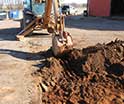
Many lenders will automatically require a Phase 2 Environmental investigation for a property that has had any of these environmentally-sensitive uses. These studies can range from limited studies to comprehensive subsurface investigations, that include installation of groundwater monitoring wells with extensive testing. As part of the due diligence process for real estate transactions, a more limited study should be conducted as a screen initially to determine if there is a severe problem. If this is the case, further site characterization may be required, so this can help the buyer decide if he wants to go forward with the transaction.
There also is the ASTM E1903-11 Standard Guide for Phase II Environmental Site Assessment Process that sometimes is used to develop a scope of work. Due to the wide variety of subsurface contamination situations, a more site specific approach is often the best approach to determining if a significant environmental liability exists, in order for the Client to make a good investment decision during a real estate transaction.
We can conduct the report based on this standard, if the Client requests it, however the industry standard is typically shaped by the most economical sampling methods, in the shortest period of time, with enough data to make an accurate conclusion regarding the presence of a significant environmental liability in the subsurface. This conclusion is the typical answer needed during a real estate transaction, so the buyer can decide to go forward with the purchase or not.
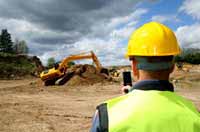
How much does Phase 2 Environmental cost?
The cost for the Phase 2 ESA ranges greatly, depending on the site specific details. The site specifics include: type of lab analyses required, drilling method needed, access to the subsurface, overhead constraints, groundwater testing required, etc. The cost of our Phase 2 Environmental investigations have ranged from as low as $2,500 to $250,000. Typical due diligence type phase two studies are in the $6,000 to $25,000 range. In order for us to provide an accurate price quote, we will look at the specific site and develop a strategy to minimize costs and maximize information in order to make accurate conclusions regarding the presence of a significant problem.
Some of AAI's Phase 2 Environmental Site Assessment projects:
scroll down Former manufacturing facility in Nashville, Tennessee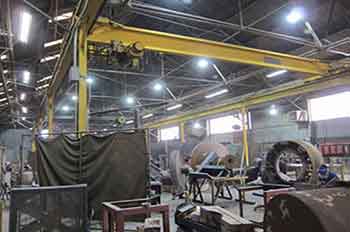
Former truck maintenance facility in Nashville, TN
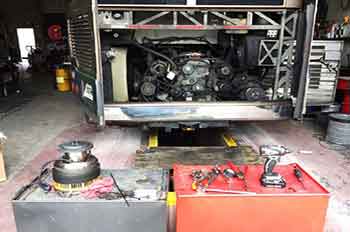
Auto dealership in Nashville, TN
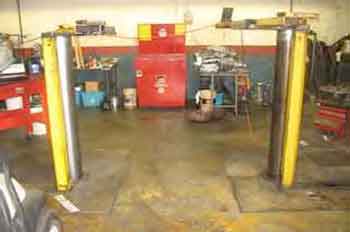
School in Bay Area, California

Former manufacturing property in Los Angeles, CA
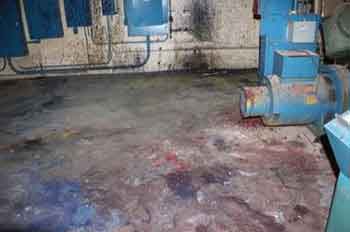
Former industrial property in San Francisco, CA
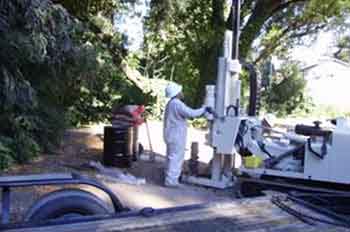
Gas station in Denver, Colorado
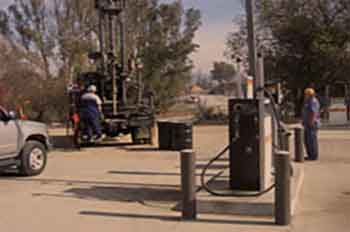
Agricultural property in Cincinnati, Ohio

Former industrial property in Chattanooga, Tennessee
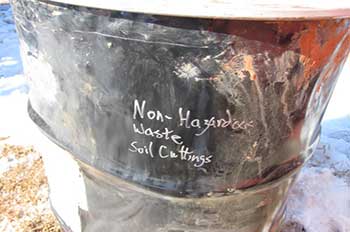
Auto repair property in Knoxville, TN
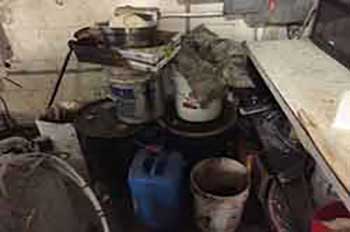
Adjacent to industrial property in Memphis, TN
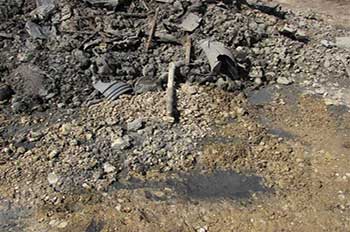
Industrial property in Atlanta, Georgia
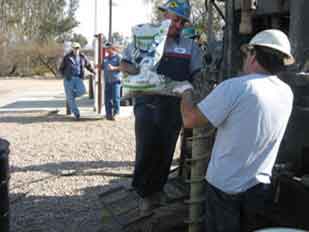
How long are Phase II Environmental reports good for?

This example is a good rule of thumb for answering this question: For how long is a Phase II ESA good? There is no simple answer to this question, but essentially if there is a significant potential for an environmental liability in the subsurface that could have occurred since the previous investigation, then a new report will be needed. Additionally, if an environmental oversight agency issues a regulatory-mandated subsurface investigation demand after a previous report, either due to a request for further delineation of contamination, a complaint or a potential human health hazard, then more work would be required. Each case should be reviewed by a licensed geologist or engineer, with extensive experience with these types of projects.
Vapor Intrusion Assessment
Our company conducts soil vapor/gas sampling by utilizing the most appropriate methods for specific sites, based on known and unknown contamination, as well as, physical constraints and previous uses. Due to potential vapor intrusion from soil and/or groundwater contamination, AAI screens the subsurface to determine if there is a significant potential for vapor intrusion into a structure per regulatory standards. Another less expensive method for assessing the potential for vapor intrusion is to conduct an indoor air survey to determine if volatile organic compounds (VOCs) are present.
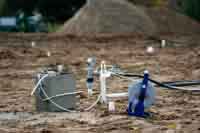
When does Phase 2 Environmental go to Phase 3?
If the lab results from the soil, water or groundwater samples indicate a significant problem, need further delineation or if cleanup is required by an agency or by the responsible party, a site characterization, risk assessment or remediation may be required. The remediation or cleanup typically has to occur until verification samples are less than federal, state or local cleanup standards. In some cases the owner or occupant wants to completely remove all contaminants to non-detectable, if it is feasible.
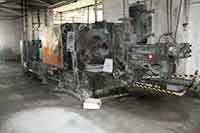
AAI has extensive Phase 2 Environmental experience in Nashville, Knoxville, Chattanooga, Memphis and Jackson, Tennessee with licensed TN Professional Geologists on staff.
How often are Phase 2 Environmental Assessments conducted?
Since the environmental industry has been in-place for over 30 years, a large majority of sites that needed a Phase 2 Environmental Study have already been assessed and/or remediated, cleaned up or received regulatory closure. Although Phase II Environmental Site Asssessments are still performed with soil and/or groundwater sampling, it is less common than in previous years.Phase 2 Environmental News
February 18, 2023 - Ohio train derailment: Norfolk Southern CEO visits East Palestine after crash.February 1, 2023 - Thornton files lawsuit over toxic PFAs in water.
January 21, 2023 - Our job is to protect Nebraska's interests: Bill would stop out-of-state groundwater exports
January 15, 2023 - Researchers test private wells near Jones Road Superfund Site after EPA report finds groundwater contamination is still a concern
